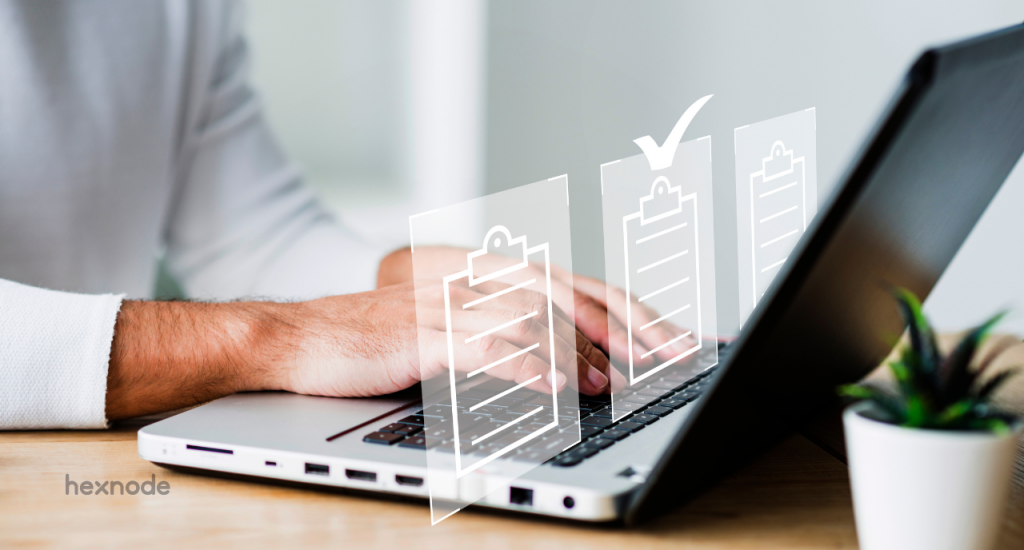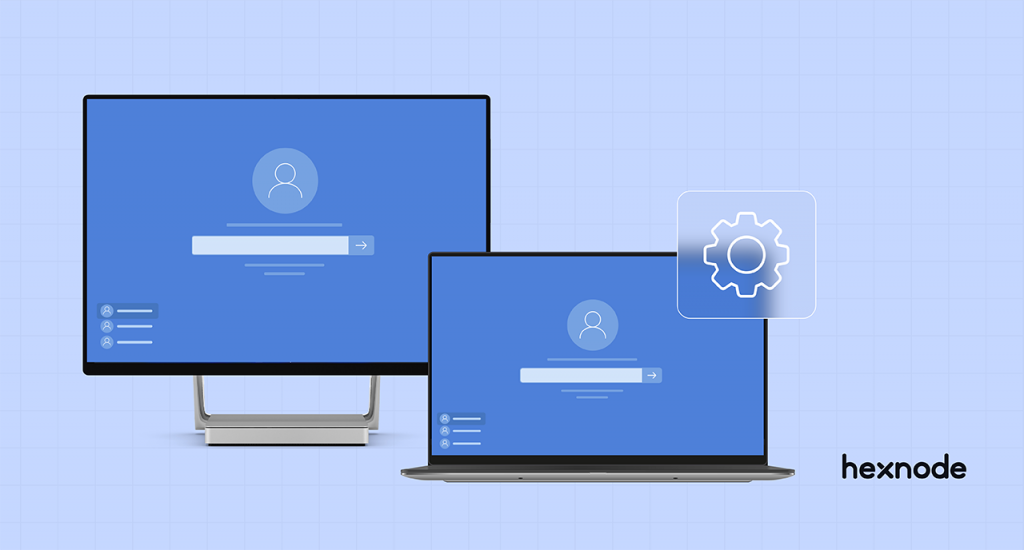Mobile devices have become an integral part of our professional lives. Since more data is being accessed and transmitted over the air, the need to manage and safeguard sensitive data and information has never been more critical. Mobile Information Management (MIM) addresses this issue pretty well.
In theory, MIM is a strategic approach taken by organizations to seamlessly control, manage, secure, and optimize the use of data on mobile devices. Understanding the technicalities of MIM can provide your organization a competitive advantage while also assuring the highest security of private data.
What’s MIM?
As we already mentioned, MIM helps secure corporate data. MIM segregates the data, protecting it from unauthorized and unwanted applications. Additionally, it encrypts the data so that it cannot be accessed by any space other than the trusted corporate space on your device. With Mobile Information Management, businesses can strictly define the scope of their data, and draw boundaries within which the data can be accessed. Let’s see some use cases of MIM to understand the concept of MIM better, shall we?
- For data corruption prevention
When we do not clearly define the previously mentioned boundaries, anyone can access and modify important data. This can lead to the data being tampered with in such a way that it is not recognizable. Data integrity is put at risk. Use MIM to your advantage and protect the data from intruders.
- As lost devices petrify us
Lost devices pose a lot of threats to businesses, since their data can be stolen or corrupted. MIM solutions can help encrypt data and force strong passwords on devices to ensure both the device and data are secure.
- Control access to company resources
When critical company resources are made accessible to all employees, the organization becomes a more attractive target for cyber threats. So, it is essential to make sure that only the right people have access to the right kind of content. With a proper MIM solution, you can limit access to company resources and ensure that only those in need have access to critical data.
- Secure data sharing
One of the most common targets for cyber-attackers is data in transit. Employees tend to share content over the air without knowing the possibility of a data breach. But with a proper MIM solution in place, you can take measures to secure data in transit.
How does MIM work
A very common question when talking about MIM is, “Is MIM a software?” Well, the answer would be a complicated one. But we will try to explain it as simple as possible. MIM is a strategy that involves a combination of software, tools, and best practices working together to secure, manage, and distribute sensitive data across users, devices and applications in an organization. Some of the key features of MIM include:
- Data classification: When implementing MIM across an organization, the first thing to be done is to identify and segment data based on its nature. The simplest way of doing it is to separate the critical and sensitive content from other content.
- Containerization: IT administrators must ensure that employee devices are properly containerized, which involves segregating the storage volume to keep work and personal data distinct. This approach effectively prevents unauthorized access to corporate data on personal devices.
- IAM: IAM or Identity and Access Management solutions make sure that access to work containers or encrypted data requires proper authentication. Users must provide valid credentials, such as passwords, biometric data, or multi-factor authentication, to unlock and access the secured information.
- Data encryption: Sensitive data should be encrypted whether it is stored in a work container or if it is in transit. Work containers are normally encrypted automatically upon their creation. As for other data, organizations can make use of tools and software available on the market to encrypt all forms of data.
- Remote data management: A proper MIM strategy should include tools that offer remote management capabilities. This allows administrators to remotely monitor devices, enforce security policies, and take actions such as data wiping in case of a lost or stolen device.
- Monitoring and auditing: Monitoring and auditing data access should be made mandatory to make an MIM strategy foolproof. This helps in detecting any unauthorized attempts to access data and maintaining compliance with security regulations.
In essence, Mobile Information Management focuses on securing data at the granular level, making sure that even in a mobile and potentially less secure environment, sensitive information remains protected from unauthorized access, data breaches, and other security risks.
MIM, MAM, MDM, UEM and why we need ‘eM
Now that we’ve covered MIM and how it works, let’s explore similar tools like MAM, MDM, and UEM. We’ll learn how they complement MIM to help secure data and boost productivity.
Let’s take a look, shall we?
Mobile Application Management (MAM)
As the name suggests, Mobile Application Management focuses mainly on secure app deployment and management. They provide granular control over the corporate apps deployed on end users’ devices. It incorporates some features of MIM, especially the way we can control data flow between apps. However, its scope is limited to applications.
Mobile Device Management (MDM)
Mobile Device Management takes a more holistic approach to solve the mobility puzzle. While MAM deals with applications and MIM with information, MDM helps you manage your company’s entire device fleet. Everything associated with how your employees use the corporate devices comes under MDM’s scope of responsibilities. This could go from something as simple as setting password rules for your devices, to more sensitive features like remote wiping.
Unified Endpoint Management (UEM)
Now what is Unified Endpoint Management? What more does it have to offer than MDM? With UEM, we can manage endpoints of any sort, be it mobile phones, desktops, TVs, wearables or IoT devices. You can look at it as a more advanced version of all these mobility solutions. UEM combines devices of different architecture and use cases as oftentimes businesses will have to deploy different types of devices to match purpose.
For a complete deep dive into the different aspects of UEM, don’t forget to read ‘The absolute guide to Unified Endpoint Management (UEM) in enterprise.’
Mobile Information Management and Hexnode
MIM comes under the broad spectrum of features offered by a UEM like Hexnode. This makes managing and securing data much easier for UEM users. That’s one less problem while managing the devices, without the worries about your personal and corporate data getting intertwined. Now, you might be wondering how exactly Hexnode makes this possible. Well, mentioned below are some features that will help you with it.
Configure encryption settings remotely
Hexnode offers encryption setup options on multiple platforms including iOS, Android, macOS, and Windows. With Hexnode’s strong encryption feature, users can protect sensitive data from unauthorized users. In the case of iOS devices, Hexnode can enforce a password on the device, making the device encrypted in the process. As for Android devices, you can enforce the device to be encrypted. Well, things are a bit different for macOS and Windows. With Hexnode you can configure the native full-disk encryption provided by both platforms, that is, FileVault for macOS devices and BitLocker for Windows devices.
Define managed web and e-mail domains
Another built-in feature of Apple on iOS devices, managed domains, lets you specify domains as managed, so that files downloaded from these domains can only be opened by Hexnode-managed applications. With Hexnode, you can create a list of managed e-mail domains, extending enterprise data security.
Enroll your BYO mobile devices in Hexnode with ease
Hexnode lets you enroll and manage your personal devices in the management portal with dedicated enrollment methods. User enrollment and Android Enterprise Profile Owner mode are two enrollment methods offered for iOS and Android devices respectively to enroll personal devices into Hexnode. Upon enrollment using either of the two methods, a separate encrypted volume is created on the device, where the work data will be stored. This draws a line between personal and work data, keeping them from getting intermixed.
Keep your business and personal data apart using Hexnode
Once BYO devices are enrolled in Hexnode, a separate storage space is created in disk drive to differentiate work data from personal data. This volume is called Work Profile in the case of Android devices whereas it is known as Business Container in iOS devices. Using Hexnode, you can control and restrict the flow of data between the managed and unmanaged volumes ensuring that only the apps authorized by you can access the work data.
Content management
As mentioned earlier in the blog, it is important to make sure that only the right people have access to critical data. With Hexnode you can send, delete and manage content on Android devices directly from the management portal.
Another aspect of content management is to make sure that the users are not accessing anything they are not supposed to as it may make corporate data vulnerable to cyberattacks. With Hexnode’s allowlisting and denylisting feature, IT admins can restrict users from using unnecessary websites and apps on their mobile devices.
Summing up
It is impossible to overstate the value and necessity of a solid MIM strategy in the modern digital environment. Because of this, there is a constant need for accessing information remotely which demands appropriate monitoring and supervision. Incorporating a Unified Endpoint Management (UEM) solution would be a more thorough approach given that MIM is only one component of the business mobility management puzzle.
Try Hexnode for free!
Sign up for a free trial and check out how Hexnode can help with Mobile Information Management.
Sign up




